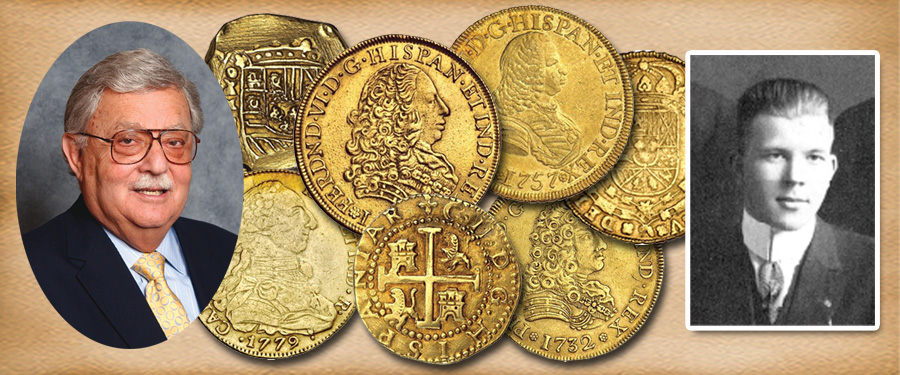
During
the later part of 1960 and into 1961 Stack’s continued to locate gold coins of
the world to enhance the J.K. Lilly Collection.
Mr.
Lilly made his annual fall visit to New York and he came in again in the spring
on his return from Florida. He reviewed what we had acquired and talked with us
about adding to his collection. Of course he wanted to learn how the import
regulations would affect our ability to get the coins he needed to keep his
collection growing.
As
mentioned earlier, during the administrations of President Eisenhower and
Kennedy, the influx of counterfeit gold coins was hurting the buyers in the
United States. The Treasury put the Office of Gold and Silver Operations,
(OGSO) in charge of controlling this and they instituted a licensing procedure
for importation of any gold coin. As described before the procedure varied with
each application. Each package that contained gold coins needed a license when
arriving or carried into the United States. The coins could be held at Custom
Houses around the country until a license was issued. Because the OGSO did not
publish the requirements and what the criteria would be for a license, Stack’s
searched within the United States for coins rather than fight for each import.
We
did quite well the first few months of our purchasing, as many dealers were not
fully aware of the import problems and willingly sold us coins from their
inventories. But as the availability dropped, it became more difficult to find
new and fresh coins to add to the Lilly Collection.
We
explained the entire problem to Mr. Lilly and he instructed us to proceed the
best we could with the handicap we were encountering in getting new material.
I
made our customary delivery to Mr. Lilly at Eagle’s Nest and while there
reviewed the progress we had made. He loved to study each coin to learn more
about the coins and coin series. He wanted to have a greater understanding of
the monetary and political events that were taking place at the time of the
minting of each coin in his collection.
During
the period of 1962 and 1963 we were fortunate to be able to acquire some very
special coins and offer them to Mr. Lilly. From earlier purchases he owed a
legendary Brasher doubloon from America’s colonial period. It had come from
Charles Green, a Chicago dealer who had links to the extensive Brand
collection.
Now
we were offered and bought privately the half Brasher doubloon, a unique piece. We learned that it was held in an old-time
collection and that it was now for sale. We researched the piece and confirmed
it was genuine. We felt and Mr. Lilly agreed that it belonged in the Lilly
Collection.
In
1962-1963 we offered for sale the Baldenhofer Collection, a cabinet that
included many rare United States gold coins, and had, as part of the early half
eagles, three varieties of the 1797. Two of the three varieties found in the
Baldenhofer Collection were often found in extensive half eagle collections:
1797 Small Eagle, 1797 15 Star Large Eagle, but our research could not find any
special reference to the 1797 16 Star Large Eagle. (No doubt this variety was
struck as the dies for the others wore out!) We cataloged it as we saw it, and
offered it as part of the sale. Before the sale we learned that this was the
only example known of that variety.
We
bid on it for the Lilly Collection and purchased it. Now the Lilly Collection
was unique in its own way. It had two unique gold coins of the United States
and Mr. Lilly was delighted.





